The 2023 NWSL campaign is well underway and we are starting to see how each team is looking to play and which teams look like they could be challenging at the top of the league as well as those that could struggle this season.
Chicago Red Stars have had a challenging start to the season, as they have already conceded 28 goals in their first 11 games. To put this into perspective, it is worth noting that they conceded the same number of goals throughout the entirety of last year’s regular season.
Chris Petrucelli, the current manager who took charge in February 2022, successfully led the team to a playoff spot last season. However, they are currently finding it difficult to regain their previous form. If they continue to concede goals at such an alarming rate, they are on track for a disappointing season that will be characterised by their struggles to prevent opponents from scoring.
This tactical analysis will take the form of a scout report where we look into the tactics that Petrucelli is implementing at Chicago Red Stars. Additionally, we will analyse what is causing the Red Stars to have so many defensive issues this season and offer ways in which they can limit the number of goals they concede.
Defensive structure
In this section of the analysis, we will examine Red Stars’ defensive structure to gain insights into their setup during the defensive phase of play.
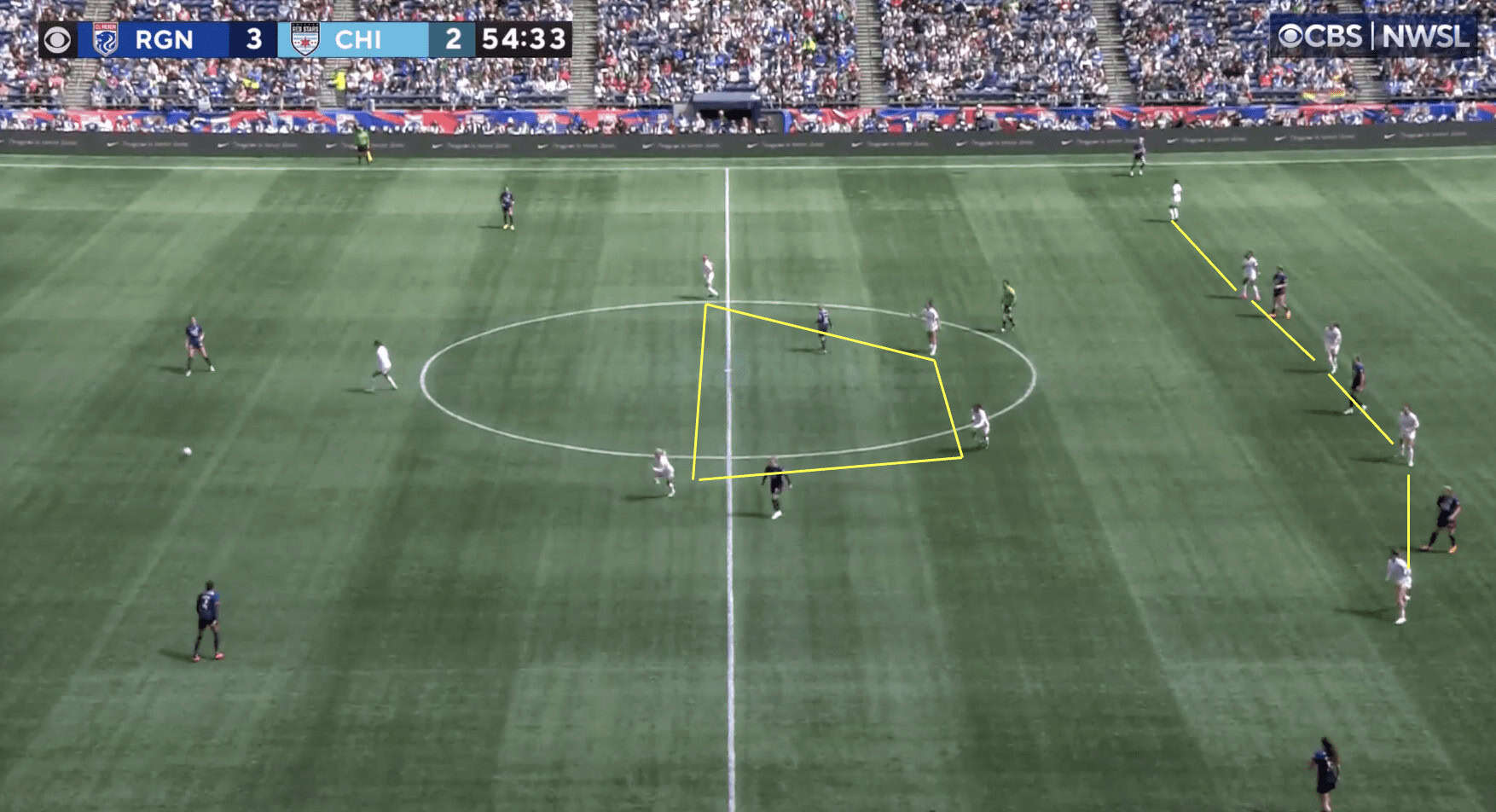
In the image above, taken from the game against OL Reign, the Chicago Red Stars can be seen settling into a back-five formation, with a four-player midfield consisting of two defensive midfielders and a lone attacker. Meanwhile, OL Reign, led by former Arsenal manager Laura Harvey, set up in a 4-2-3-1 formation, which transformed into a 3-2-5 during their attacking phase. To counter this, the Red Stars adjusted their 3-4-3 formation to become a 5-4-1 or a 5-2-2-1 in the defensive phase.
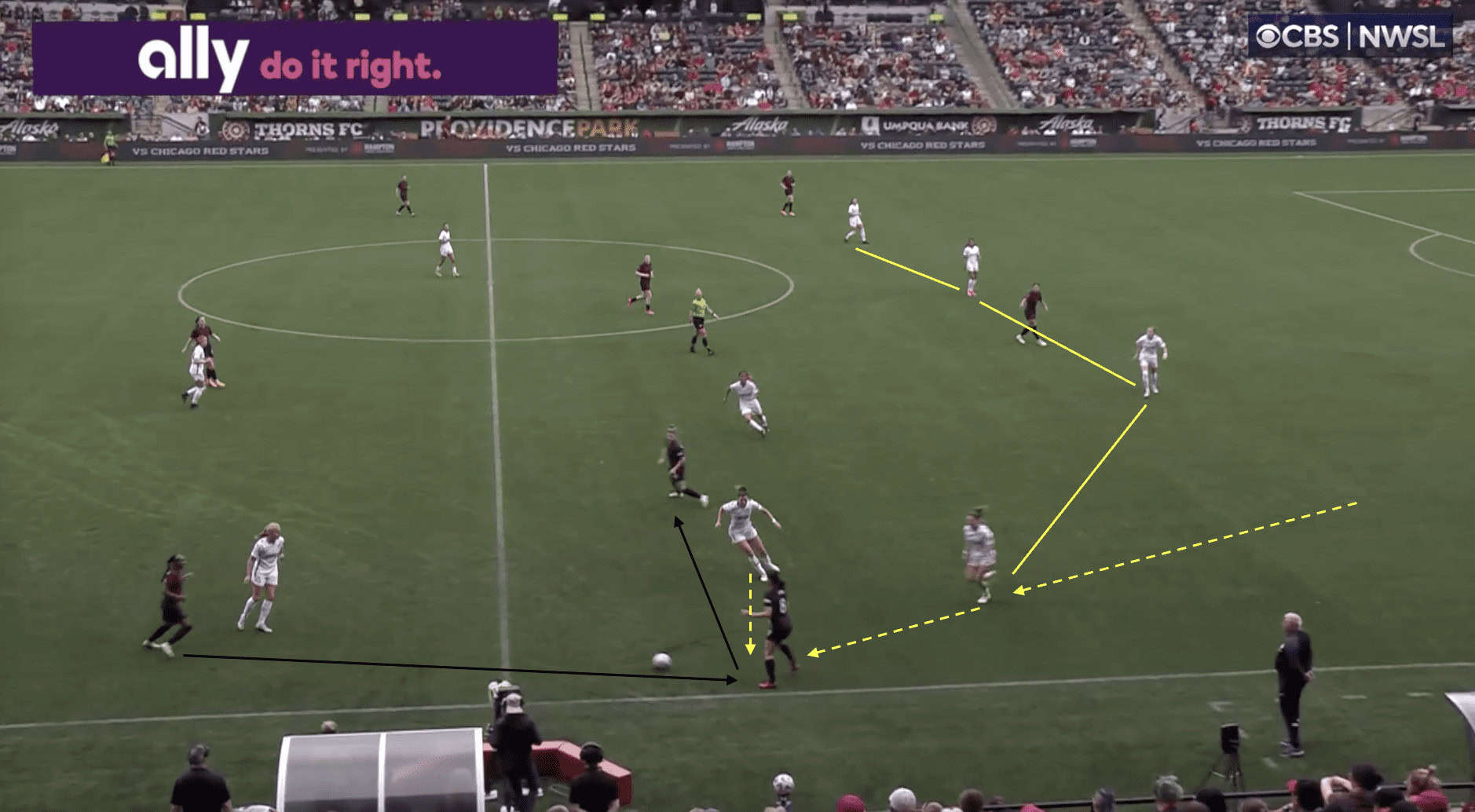
Figure 1.2 showcases Chicago lining up in a 3-4-2-1 formation, which transitions into more of a 4-2-3-1 shape when defending. However, a recurring issue arises in this particular scenario; some players leave their defensive positions to press the opponents, and only one or two Red Stars players move forward, making it remarkably easy for the opposition to manoeuvre around them.
The adaptability of the Chicago Red Stars in the defensive phase is evident, as they change their formation based on the opponent’s attacking setup. On one hand, this adaptability highlights the team’s versatility and their ability to adjust their shape according to the situation during the game. However, on the other hand, the lack of a solid defensive structure can make them appear disorganised, allowing the opposition to exploit the gaps and find ways to bypass their defence.
While the Chicago Red Stars possess the flexibility to modify their defensive formation to counter their opponents, the absence of a coherent structure sometimes leads to defensive disorganisation, making it much easier for the opposing team to navigate their way through.
Individual errors
Of course, when a team is leaking goals at such a rate as Chicago Red Stars, 2.57 goals per 90 to be exact, individual errors do creep into the equation. When players make mistakes such as misjudging tackles, losing their markers, or making poor decisions under pressure, it opens up opportunities for the opposition to score.
These errors can occur due to lapses in concentration, technical deficiencies, or even psychological factors such as anxiety or pressure during high-stakes situations. Each individual mistake adds up, increasing the team’s vulnerability and allowing opponents to capitalise on these defensive lapses.
Furthermore, the lack of confidence within the team compounds the defensive issues. When players doubt their abilities or even question their defensive capabilities, it can impact their decision-making and execution on the pitch. A lack of confidence may cause hesitation in challenges, reluctance to take risks, or a tendency to second-guess defensive responsibilities.
In this section of the analysis, we are going to take a look in detail at one of the goals conceded by Chicago Red Stars this season and dissect the individual errors that compounded to make for such a poor defensive display.
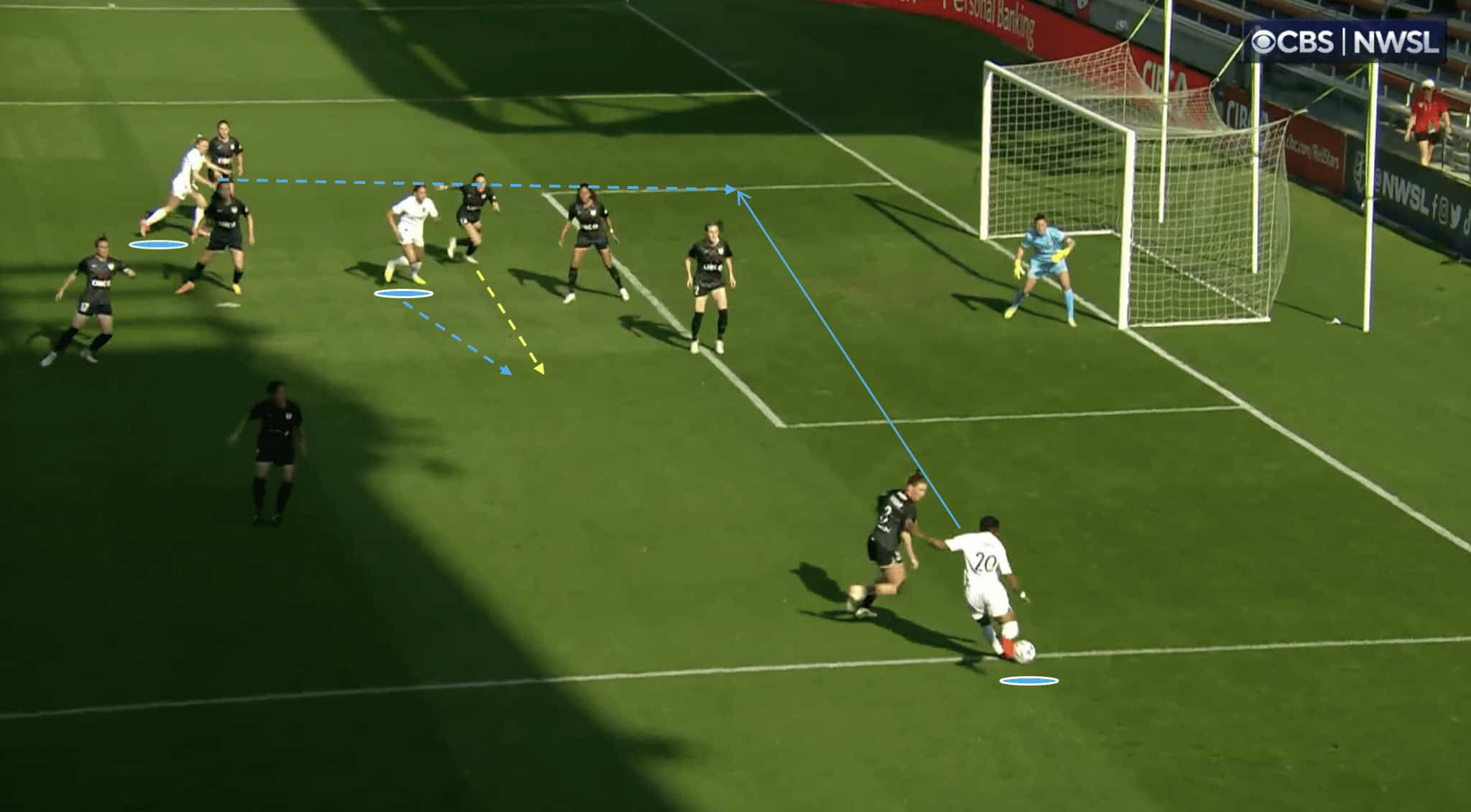
Here in Figure 2.1, we can see that Gotham FC are looking to cross the ball into the box. The ball will be played towards the far post looking for the attacker making the run from the penalty spot, whilst the other Gotham attacker makes a run towards the ball player in order to drag a Chicago defender away to create space. So, at first glance, this seems like a reasonably familiar scenario that we see in most games and with good defensive positioning and reading, can be defended.
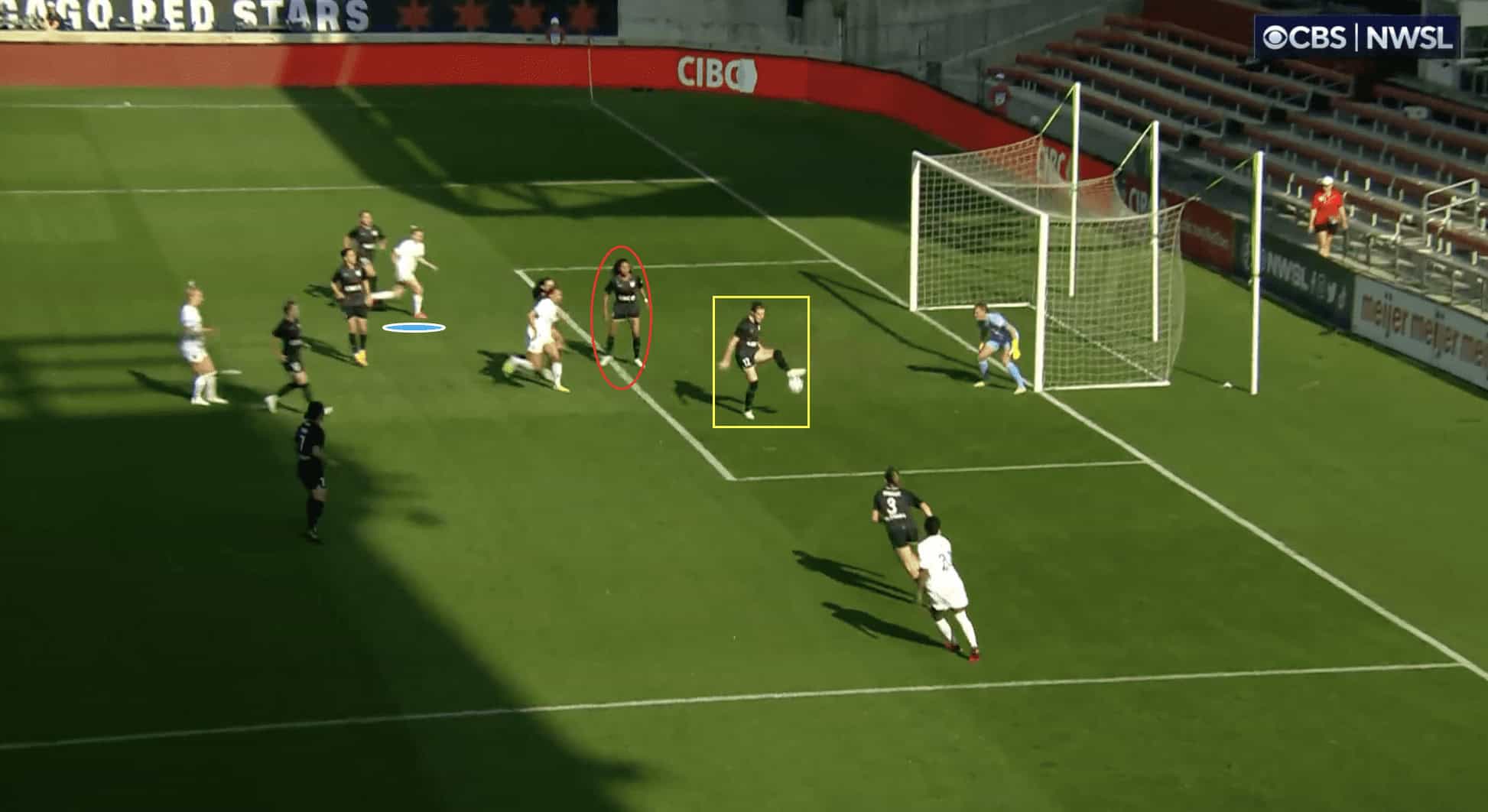
However, individual errors mean that Chicago Red Stars don’t defend this situation well at all which results in them conceding a goal. We can see in Figure 2.2, Bianca St. Georges makes a rather feeble attempt at stopping the cross which is ineffectual. Additionally, Casey Krueger is slow to react therefore the cross is able to reach the far post and be turned goalwards by the Gotham FC player.
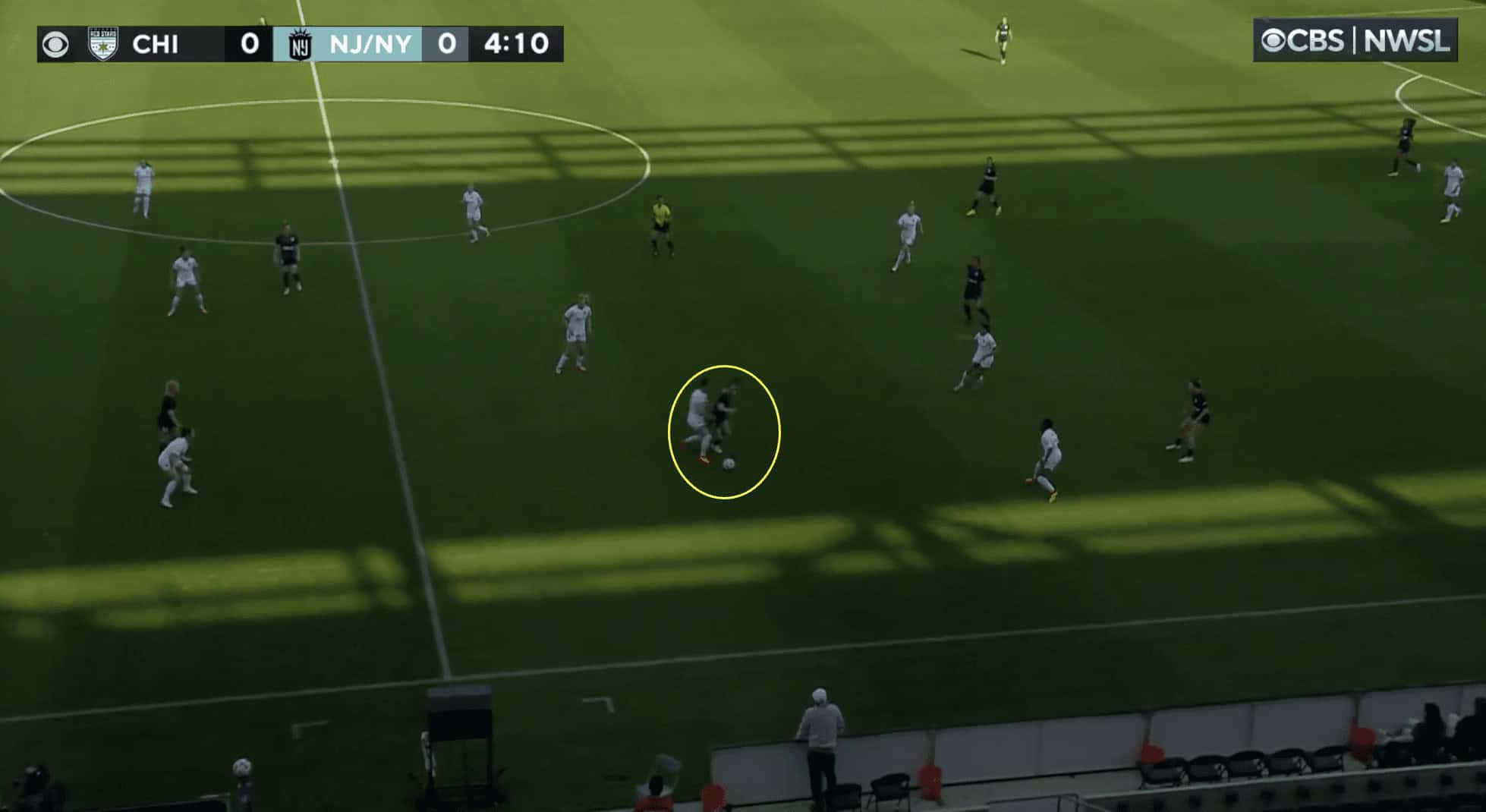
If we look back at the start of this attacking move for Gotham, we can see that it all began from a Chicago turnover of possession, as shown in Figure 2.3. As we can see from the clock, this occurred just four minutes into the game. Turning over possession early in games can have detrimental effects on the Red Stars players for several reasons. Firstly, it disrupts the team’s momentum and control over the game; retaining possession early on allows the team to establish a sense of dominance, set the tempo, and create scoring opportunities. However, when possession is lost early, it breaks the team’s rhythm and gives the opposition a chance to gain control and seize the initiative.
Moreover, it emphasises the theory that Red Stars are lacking in confidence as turning over possession early in a game can have a negative psychological impact on the team. Losing control and conceding possession can deflate morale and confidence, leading to frustration and a sense of being on the back foot. This can affect decision-making, communication, and overall team cohesion, compounding the negative effects of losing the ball.
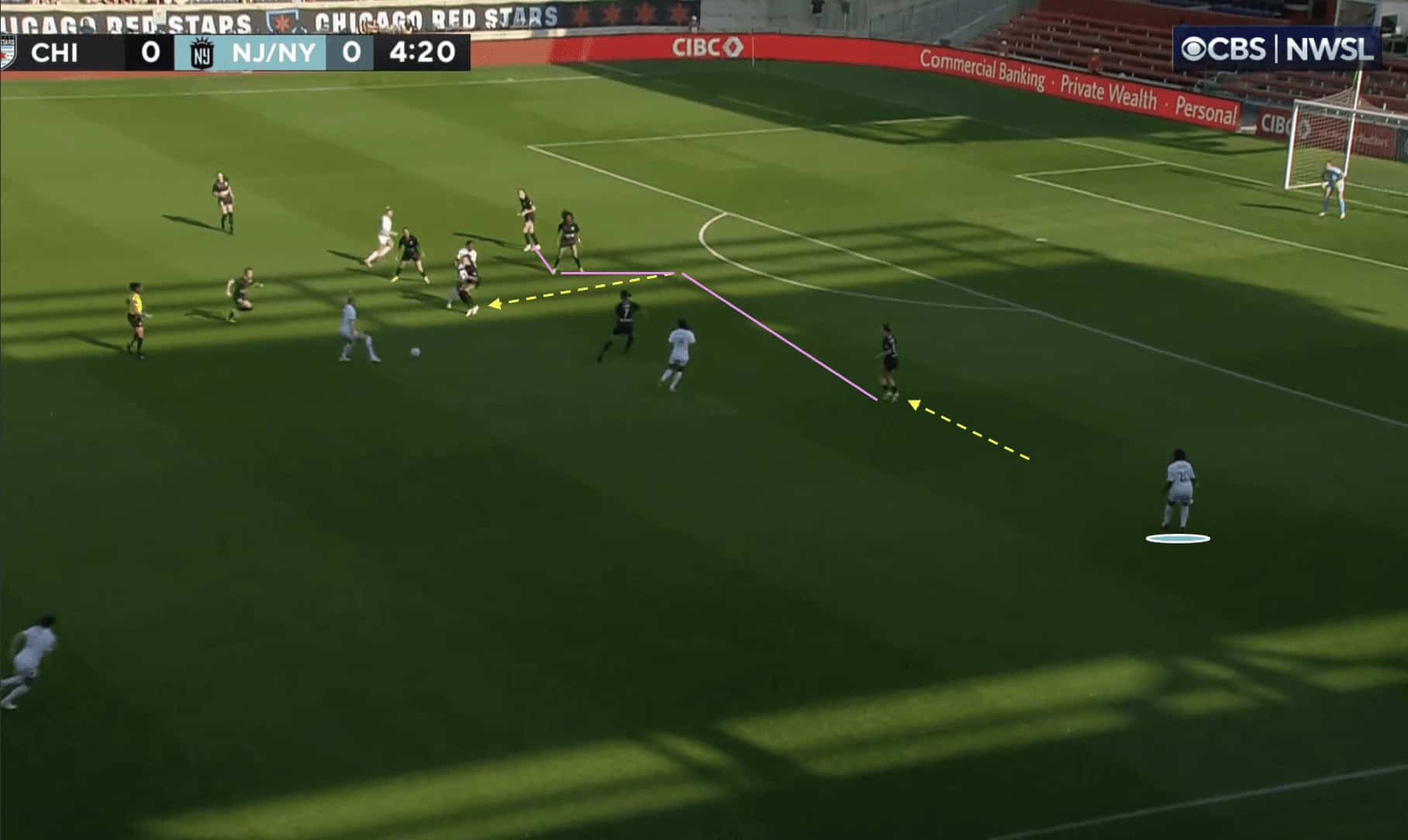
As we can see when Gotham regained possession, what ensued was nothing short of chaotic from a Chicago point of view. Tierna Davidson stepped out of the defensive line to press the Gotham player, but this was unnecessary. She would have been better off staying in a compact block of four which would prevent Gotham from having the opportunity to play through or around them. As a result of Davidson going to press, left back Arin Wright feels the need to move infield to try and close the gap left in the defensive line. The press is ineffective and the ball is swept out to the right where Taylor Smith is able to dribble down the wing and carve out the crossing opportunity we saw in Figure 2.1.
As we have observed, the team conceded this goal due to defensive disorganisation and a series of individual errors. These collective mistakes culminated in the team conceding an avoidable goal in the early stages of the game.
Spaces in the defensive line
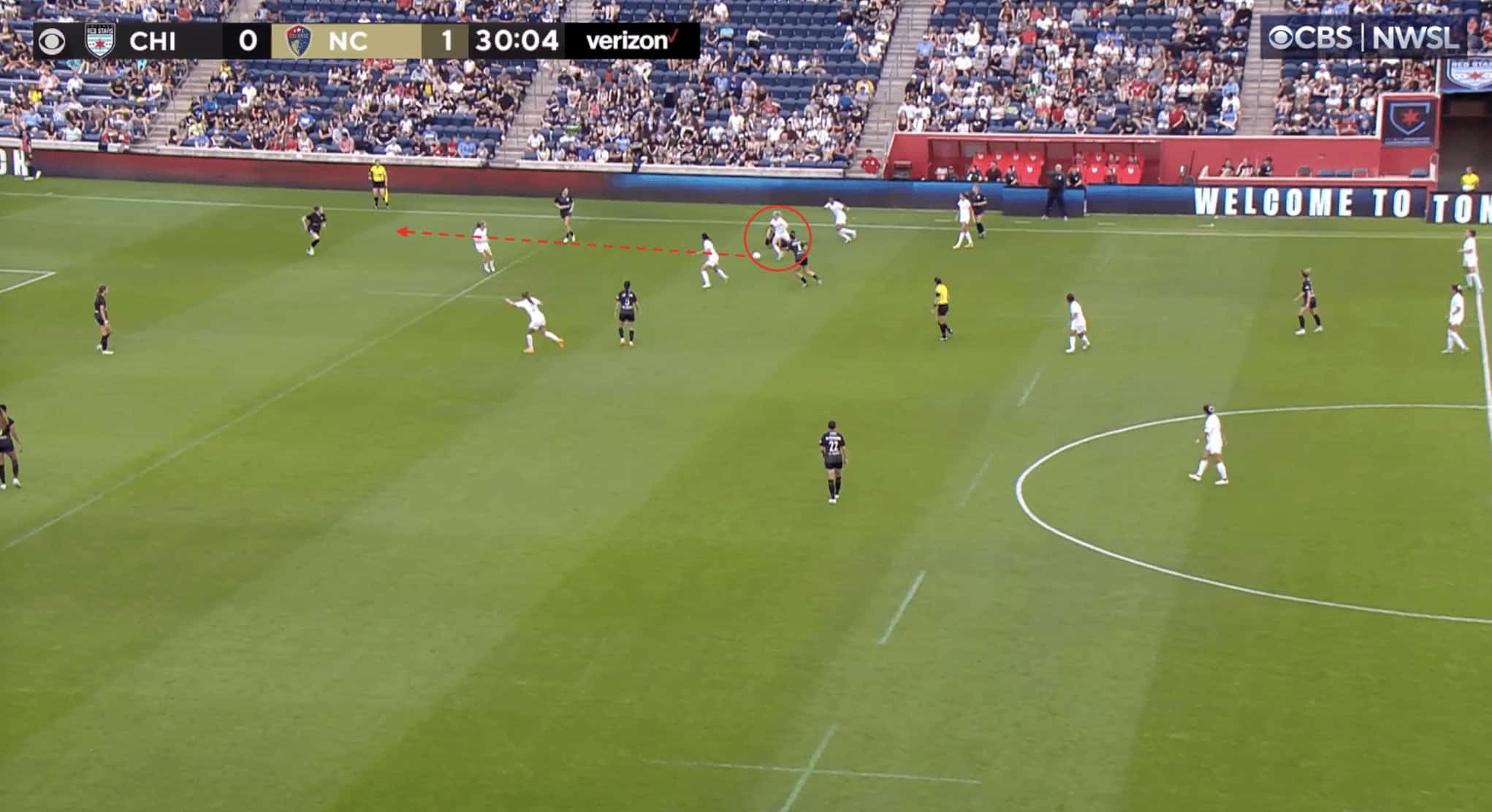
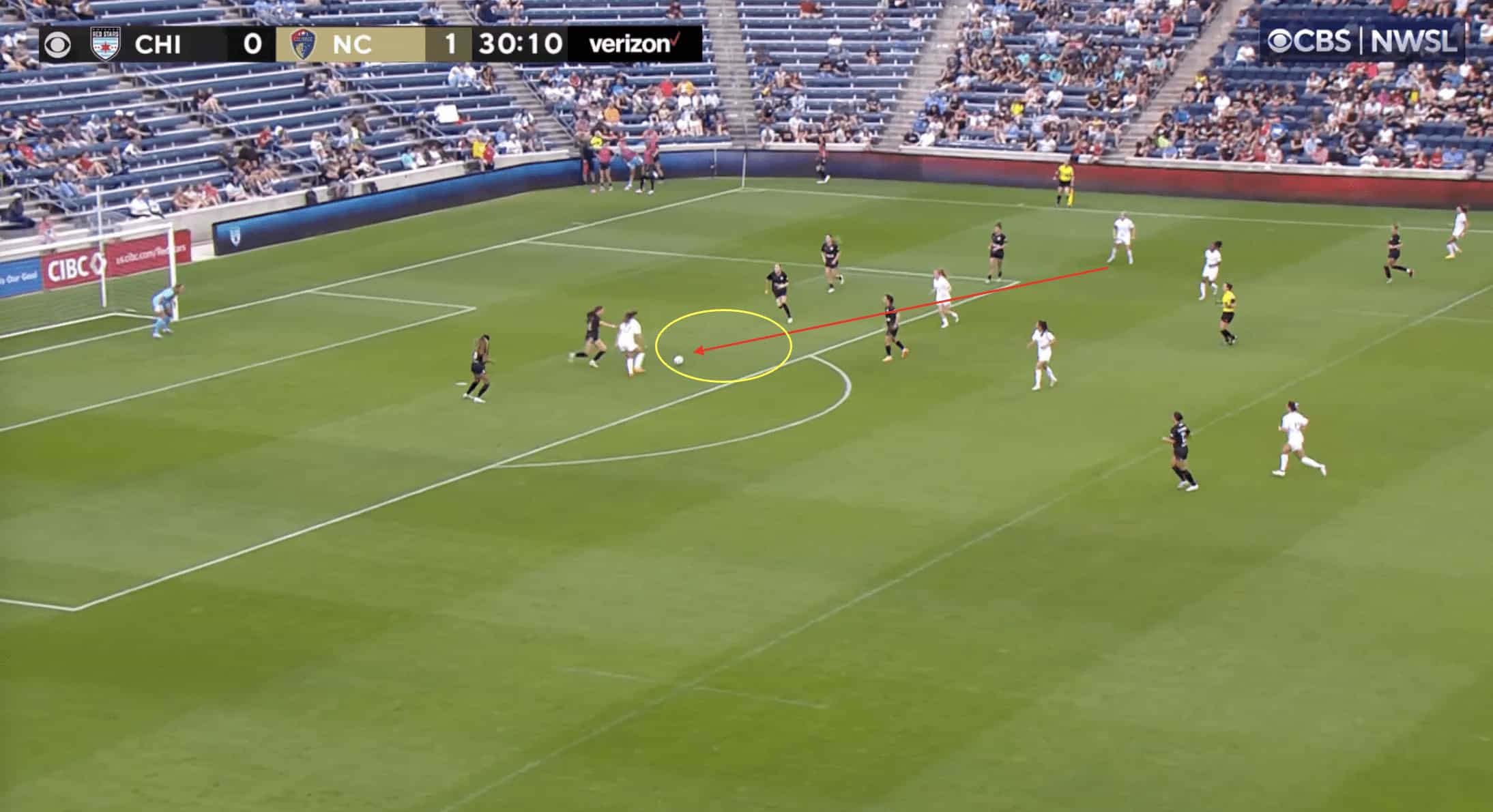
Chicago Red Stars average 116.29 losses per 90 which is the highest in the NWSL. Essentially what we are saying is, they struggle to keep hold of possession. What tends to happen is, when they lose possession, rather than quickly transitioning into a compact shape, gaps appear in their defensive line which allows the opposition to create opportunities.
As shown in Figure 3.1, Red Stars lose possession and the opposition player is able to carry the ball to the edge of the penalty area, play a pass into the attacker who has plenty of space to take a touch, and then shoot at goal, as highlighted in Figure 3.2.
When defenders are poorly positioned, they fail to maintain a compact defensive shape. This leads to spaces between defenders, which allows the opposition to get take clear shots on goal. The lack of cohesion and proximity among defenders is what allows attackers to find pockets of space where they can receive passes, and then look to shoot or make forward runs towards the goal.
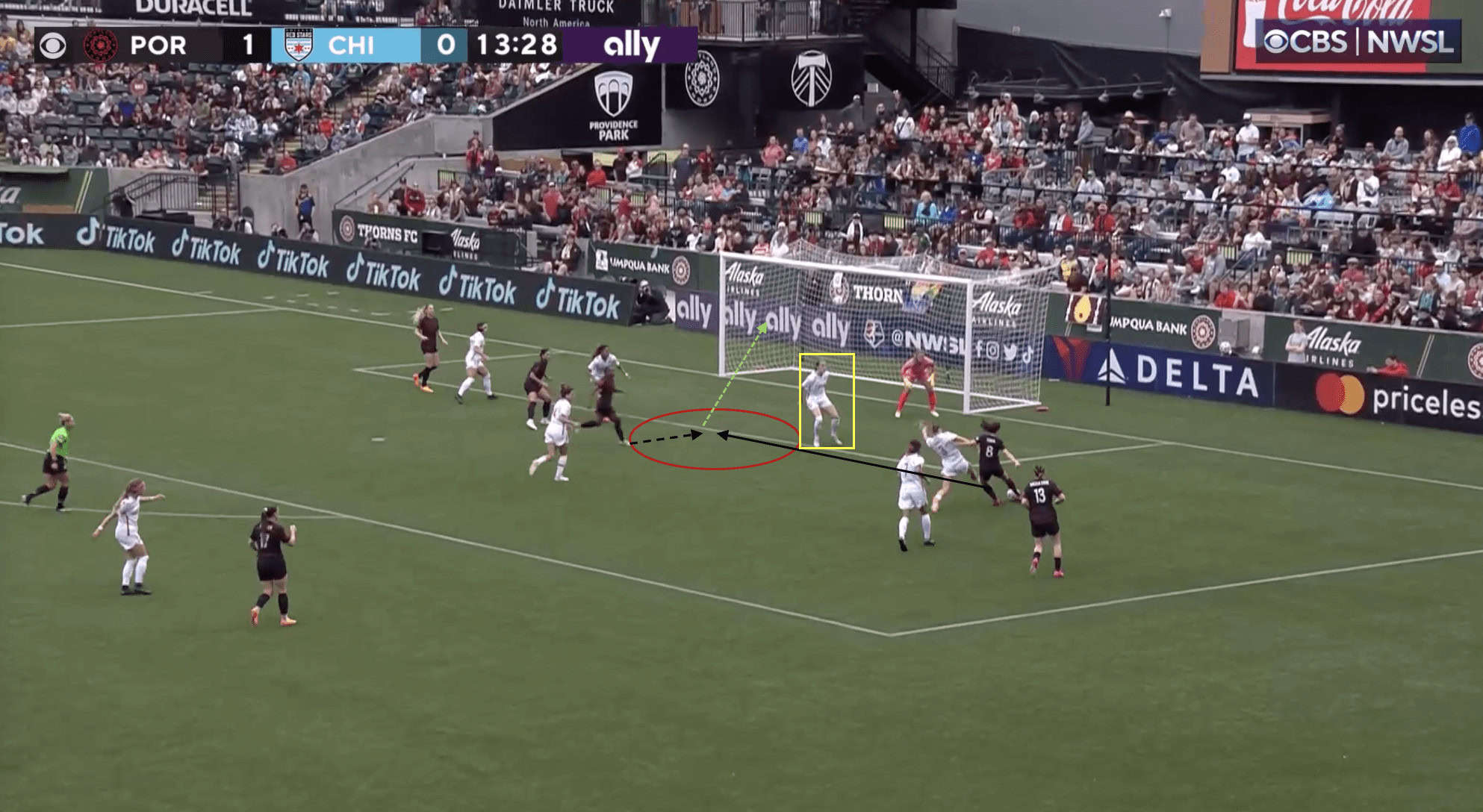
Figure 3.3 presents the same recurring situation where the team’s inadequate defensive positioning hampers their ability to effectively close down space.
In the highlighted image, we can see Portland’s Sugita successfully dribbling past Wright, allowing her to execute a precise pass towards the six-yard box. Unfortunately, due to Davidson’s suboptimal positioning, she is unable to intercept the pass. Consequently, Crystal Dunn, a player familiar to Chelsea fans from her previous stint in the WSL, seizes the opportunity to sprint into the area. Krueger, who is slow to react, is then unable to impede Dunn’s progress, and she calmly guides the ball into the net, extending the lead to 2-0.
Poor choices in possession
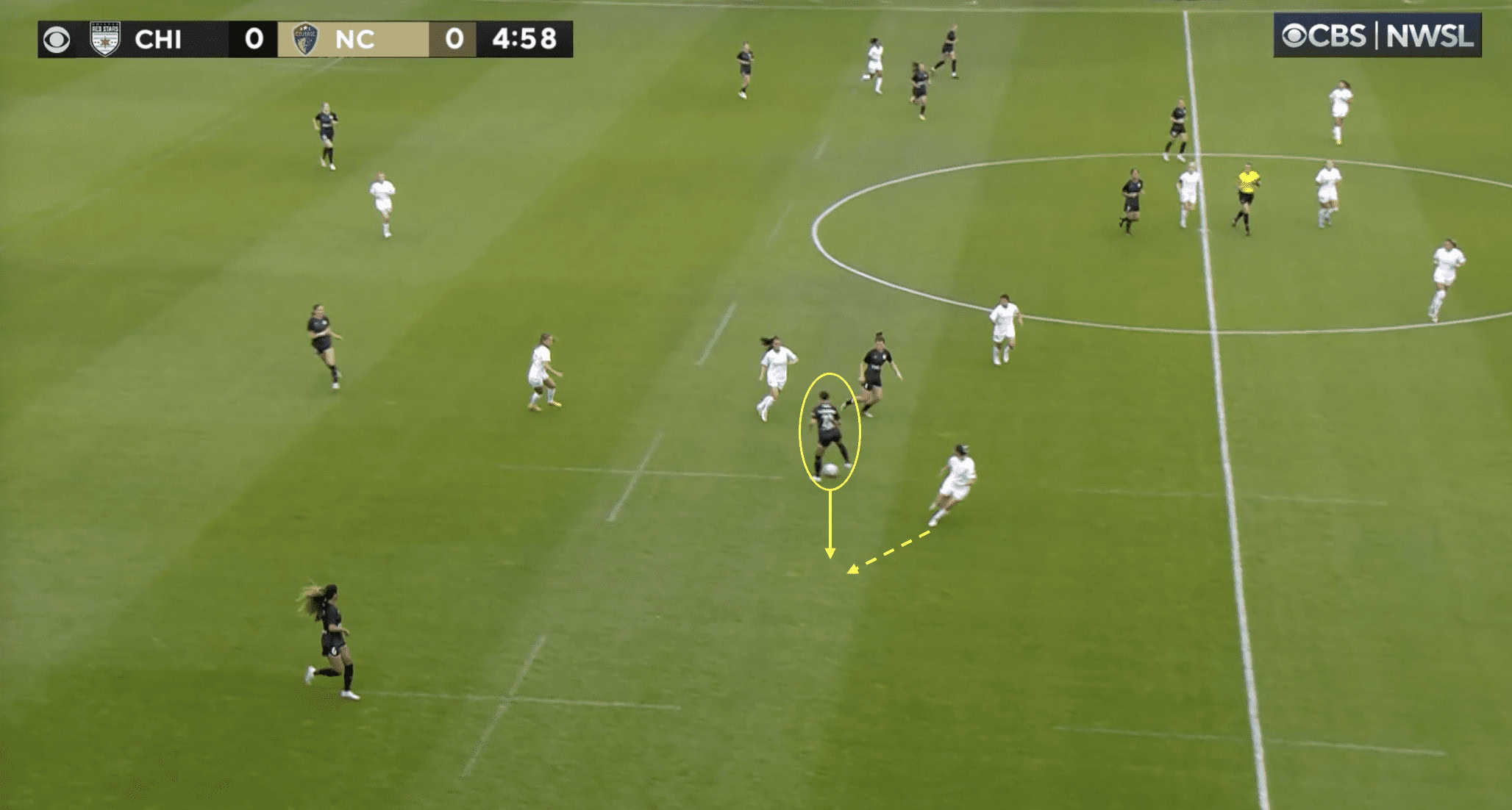
We have established already that Chicago Red Stars turnover possession more often than their opponents. Players making poor choices in possession significantly contribute to the scenario depicted in Figure 4.1. As Red Stars are in the process of building an attack, one particular player, highlighted in the image, makes an ill-thought-out decision. Without warning, they attempt a no-look back-heel pass, neglecting the safer and more reliable options available. Unfortunately, this risky pass fails to reach its intended target, resulting in a loss of possession for Chicago.
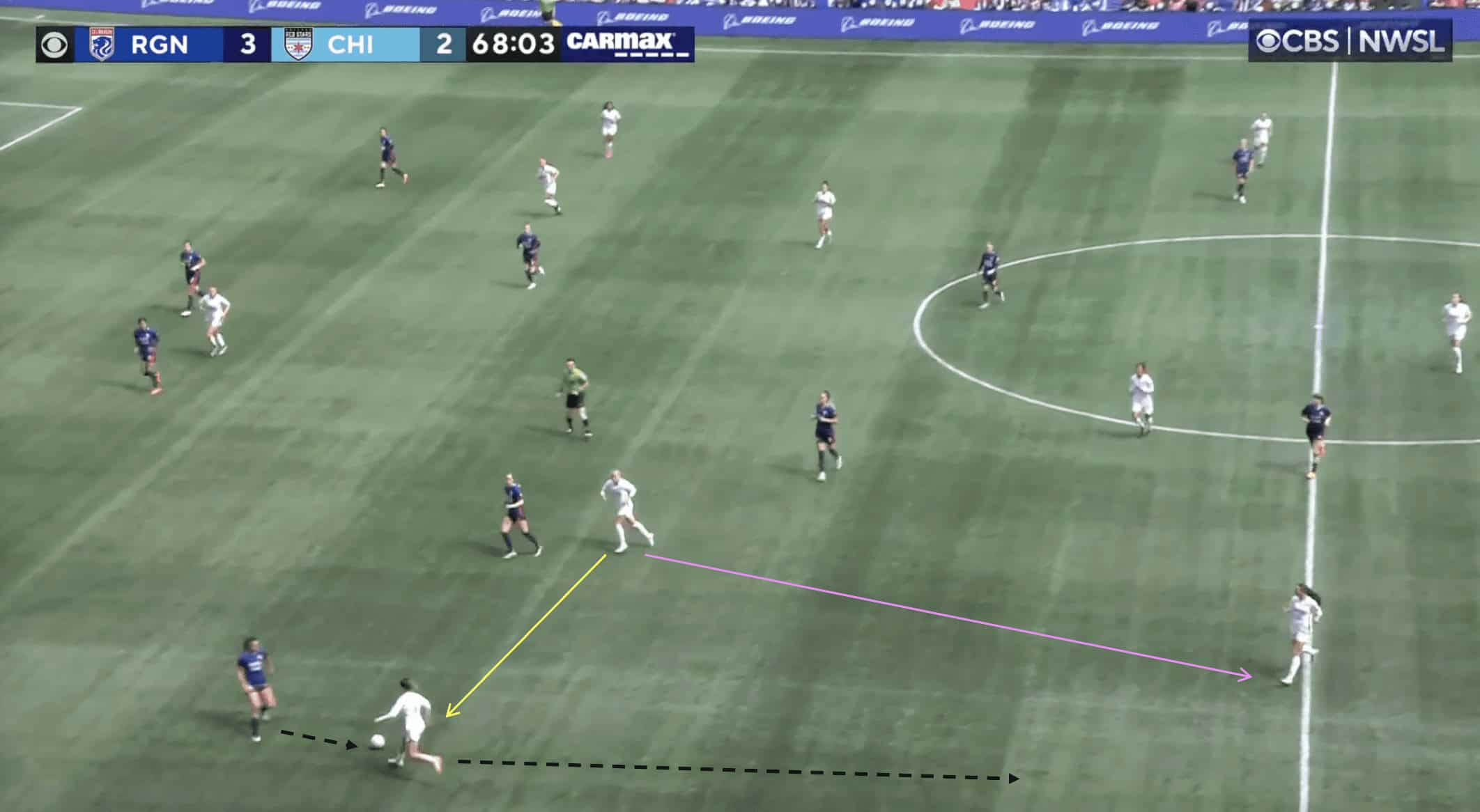
In Figure 4.2, we can see that Red Stars are constructing an attack, but it comes to a halt due to a player making a poor choice in possession. Instead of opting for a safe pass to retain possession, the player plays the ball into a teammate who has an opponent directly in front of her. As a result, she fails to control the ball, leading to a loss of possession for Red Stars. This sudden need to transition from attack to defence can catch defenders off guard, leaving them out of position and creating the gaps that the opposition can exploit.
As a result, the constant turnovers deny Red Stars the opportunity to exert any sort of control over the game and maintain sustained periods of possession. This lack of possession allows the opposition more opportunities to attack, placing greater pressure on the defensive line and increasing the likelihood of the team conceding goals.
Disorganised pressing
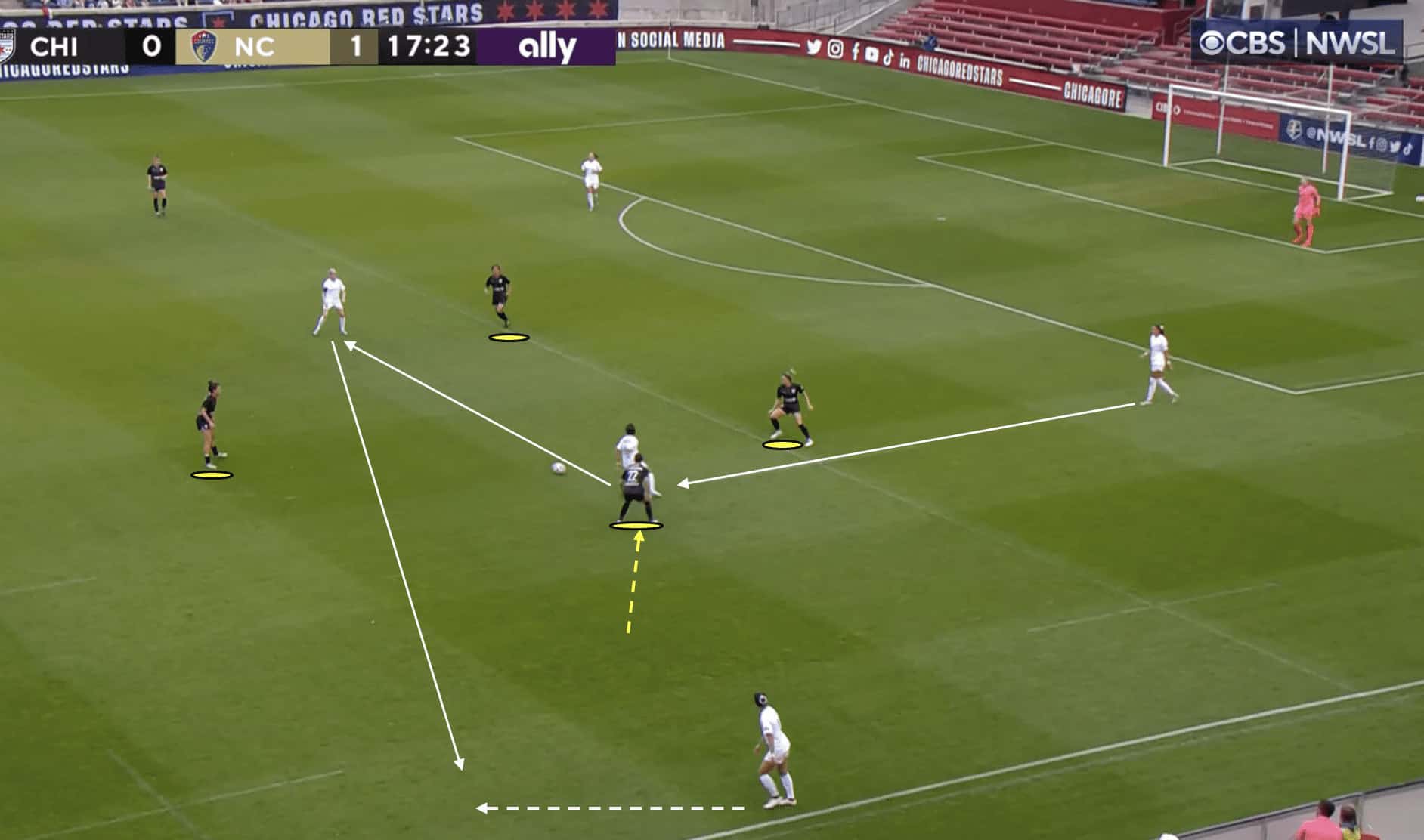
With a PPDA of 11.17, we can infer that the Chicago Red Stars are not the most high-pressing team. However, the problem is that when an opponent is building an attack, Red Stars players will sporadically look to engage in a press. The issues arise due to the fact that it is usually one or two players at a time rather than a cohesive team effort. This means it is relatively simple for the opposition to bypass the press and continue to build an attack.
In Figure 5.1, Bianca St Georges initiates a press, but as no other Red Stars player follows suit, it is easy for North Carolina to simply pass their way around the press. Additionally, due to St Georges leaving her position on the right wing, it allows North Carolina to utilise this space to their own advantage as they can carry the ball down the flank into the Chicago defensive third.
The disorganised pressing exhibited by the team fails to apply effective pressure on the opposition – pressing is specifically designed to disrupt the opponent’s build-up play, force mistakes, and regain possession. However, when the Chicago players press without a cohesive plan or proper positioning, they leave spaces unattended and allow opponents to play through the lines easily. This ineffective pressure gives the opposition much more time and options to make strategic decisions, essentially reducing the effectiveness of the team’s defensive efforts.
Conclusion
Chicago Red Stars have had a disappointing start to the NWSL season, particularly in terms of their defensive performance. The team appears to be lacking confidence defensively which has a huge impact on players’ individual performances which of course means that errors occur more frequently, this ongoing cycle can be disastrous for defensive cohesion.
Additionally, Red Stars appear to be lacking an identity in terms of their defensive structure, some players want to press, others drop off, and there is a general sense of uncertainty when in the defensive phase of play. Add this to the mistakes made in possession such as the constant turnovers and it is a recipe for disaster.
However, the season is far from over and should Chicago Red Stars be able to fix their defensive issues, they will be able to climb up the league table.





Comments